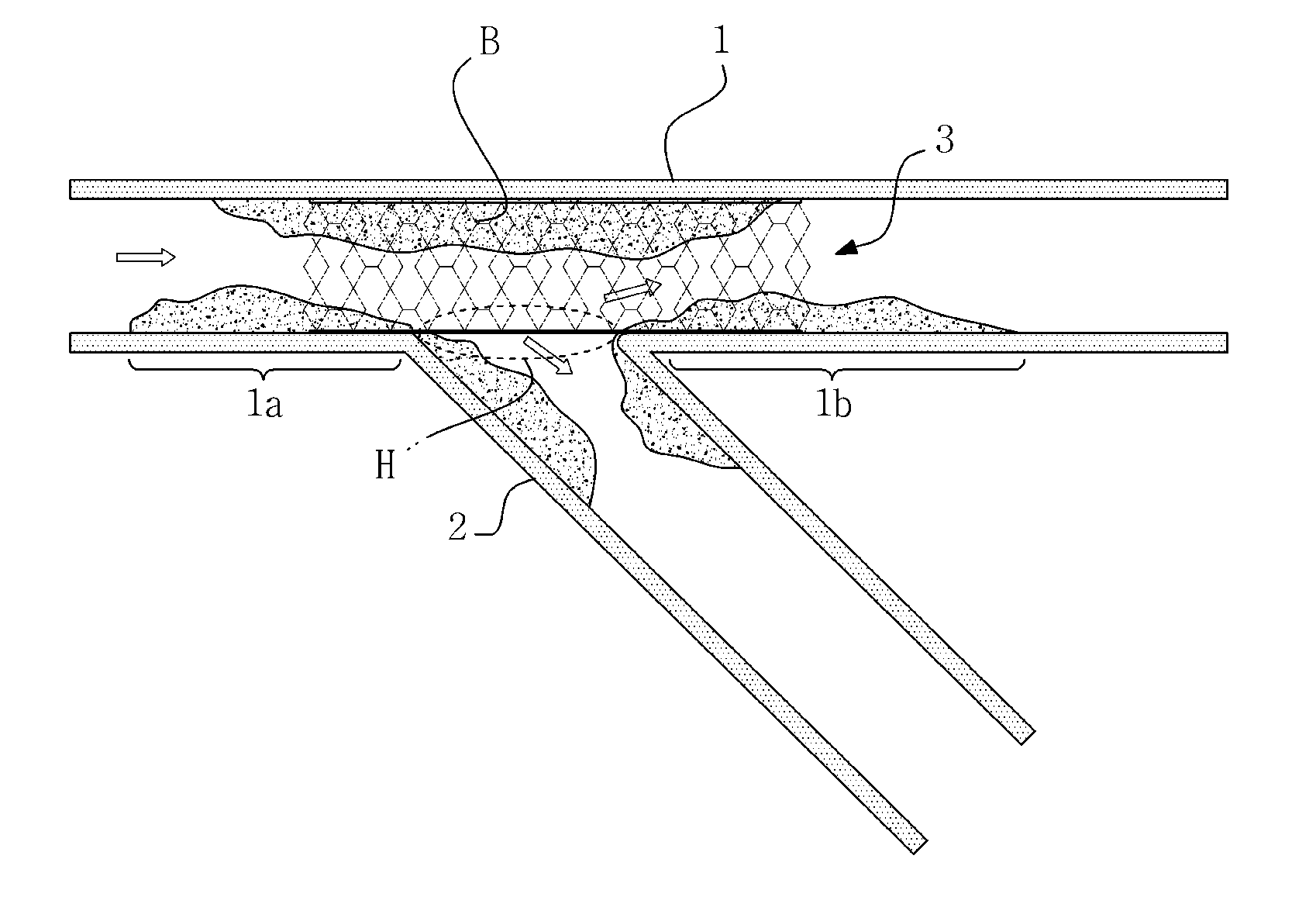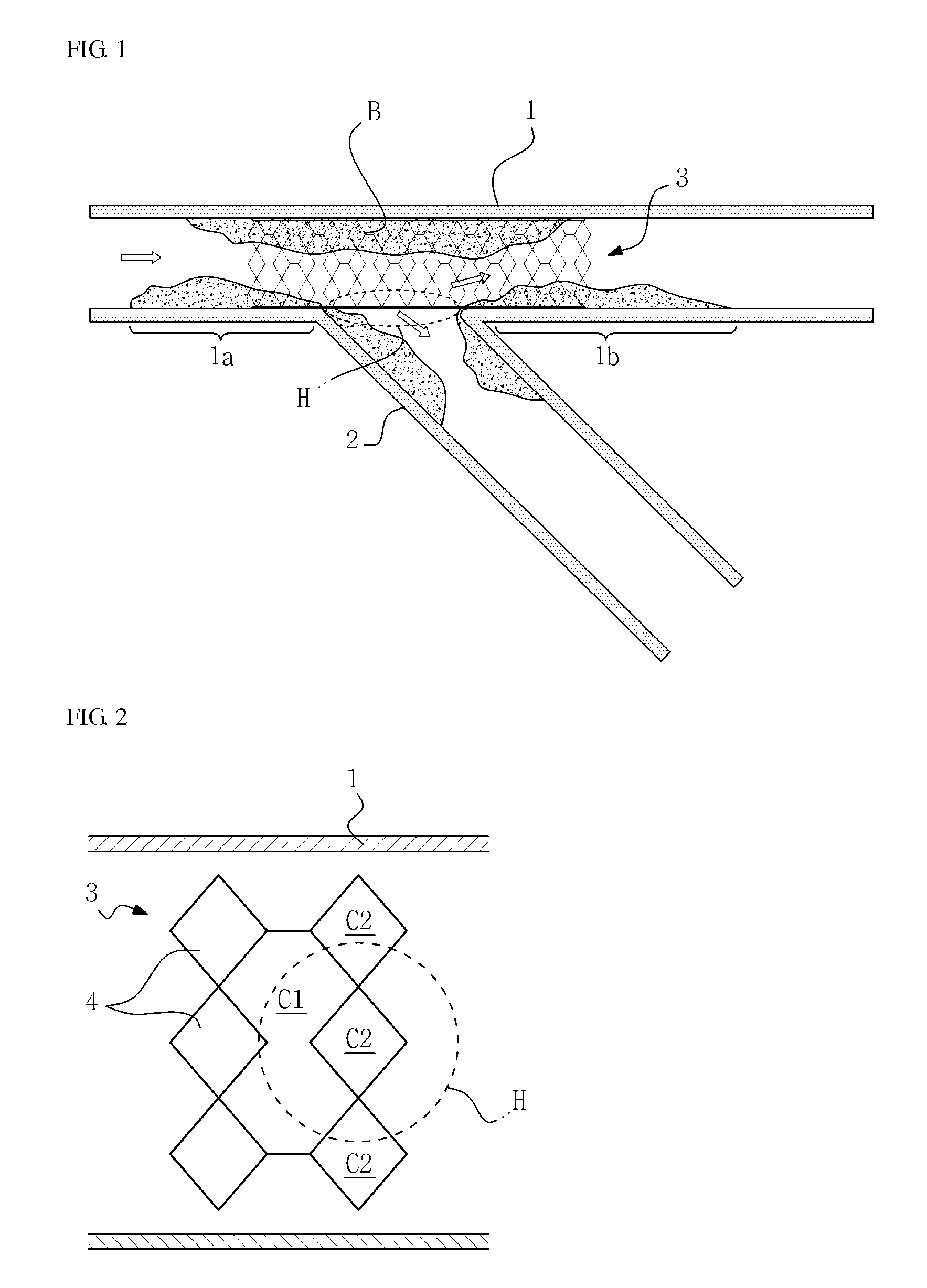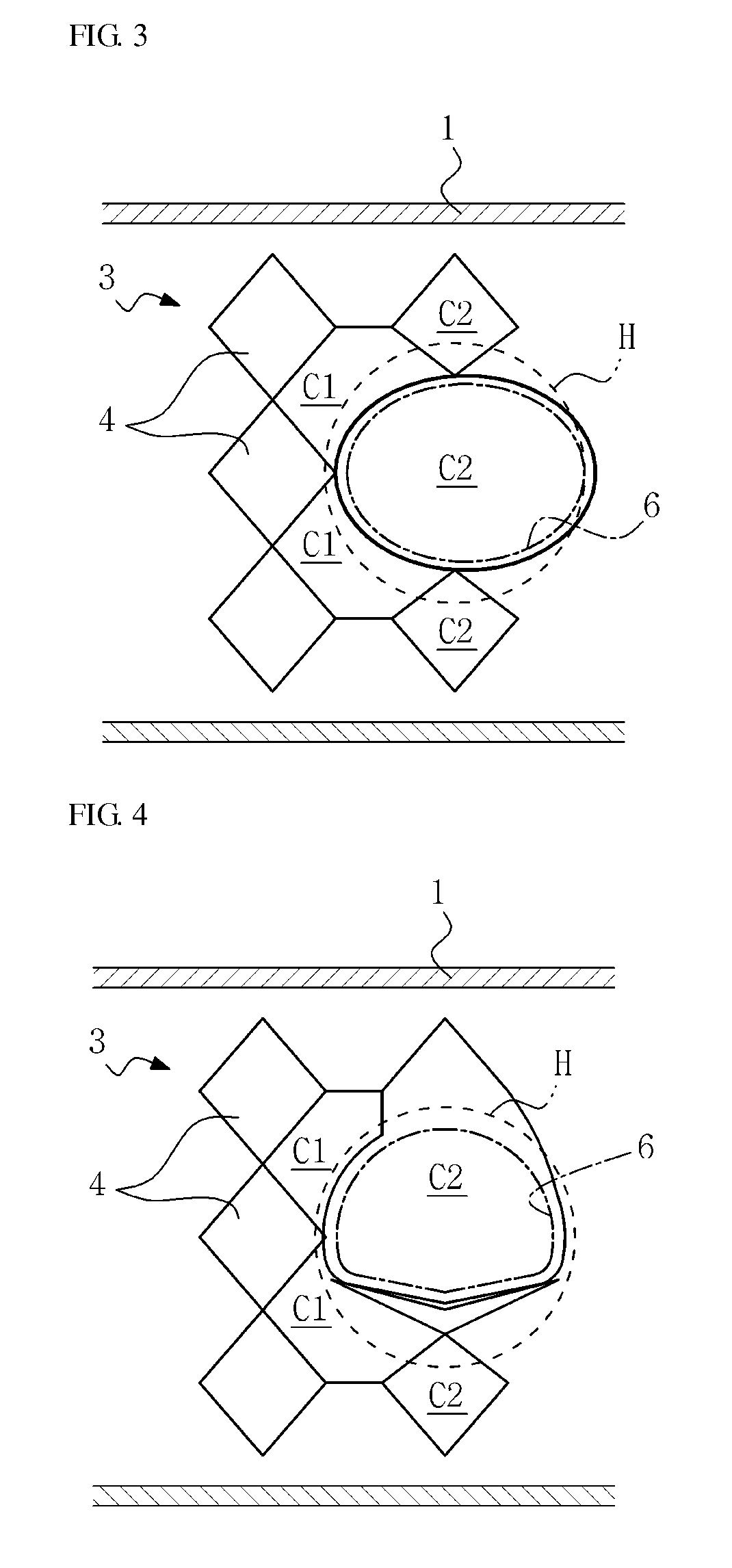Stent for protecting bifurcated blood vessels in bifurcation lesion
a blood vessel and bifurcation technology, applied in blood vessels, prostheses, medical science, etc., can solve the problems of presenting an obstacle to the flow of blood to the branch blood vessel, stent intervention fails to contribute to the reduction of restenosis of blood vessels, and stent intervention fails to contribute to the reduction of blood vessels. , to achieve the effect of accurate and easy-to-us
- Summary
- Abstract
- Description
- Claims
- Application Information
AI Technical Summary
Benefits of technology
Problems solved by technology
Method used
Image
Examples
Embodiment Construction
[0050]Hereinafter, an exemplary embodiment of a stent for protecting branch blood vessel at branch-point lesion in accordance with the present invention will be described with reference to the accompanying drawings.
[0051]FIG. 5 is a development diagram showing an unfolded stent according to an embodiment of the present invention, and FIG. 6 is a development diagram showing an inserted stent according to an embodiment of the present invention. Hereinafter, the same configurations as in the related art will be described with reference to FIGS. 1 to 4.
[0052]As shown in these figures, a stent 10 for a main blood vessel 1 according to an embodiment of the present invention includes a plurality of cell wires 12 disposed in a lengthwise direction thereof, ties 14 connected between the cell wires 12, and at least two radiopaque markers 18 provided in a circumferential direction of the stent.
[0053]In the event of intervention, the stent 10 is inserted into the main blood vessel 1 and comes i...
PUM
 Login to View More
Login to View More Abstract
Description
Claims
Application Information
 Login to View More
Login to View More - R&D
- Intellectual Property
- Life Sciences
- Materials
- Tech Scout
- Unparalleled Data Quality
- Higher Quality Content
- 60% Fewer Hallucinations
Browse by: Latest US Patents, China's latest patents, Technical Efficacy Thesaurus, Application Domain, Technology Topic, Popular Technical Reports.
© 2025 PatSnap. All rights reserved.Legal|Privacy policy|Modern Slavery Act Transparency Statement|Sitemap|About US| Contact US: help@patsnap.com



